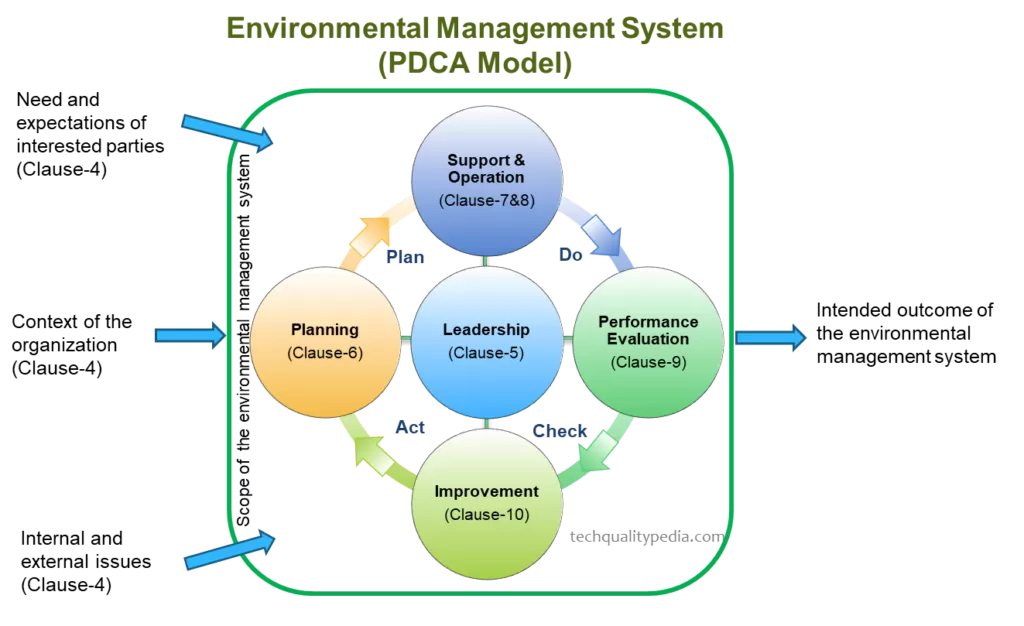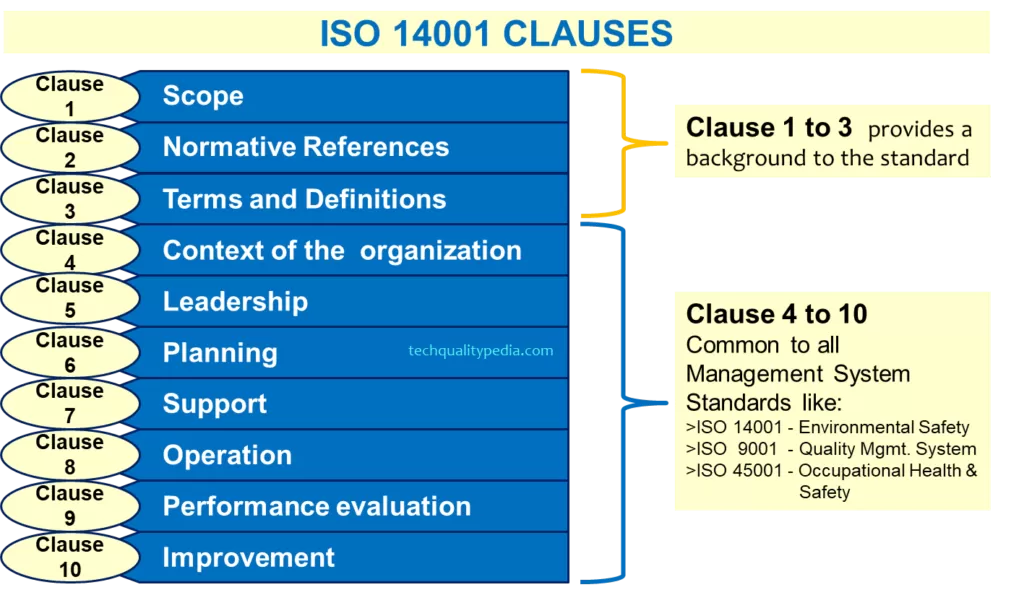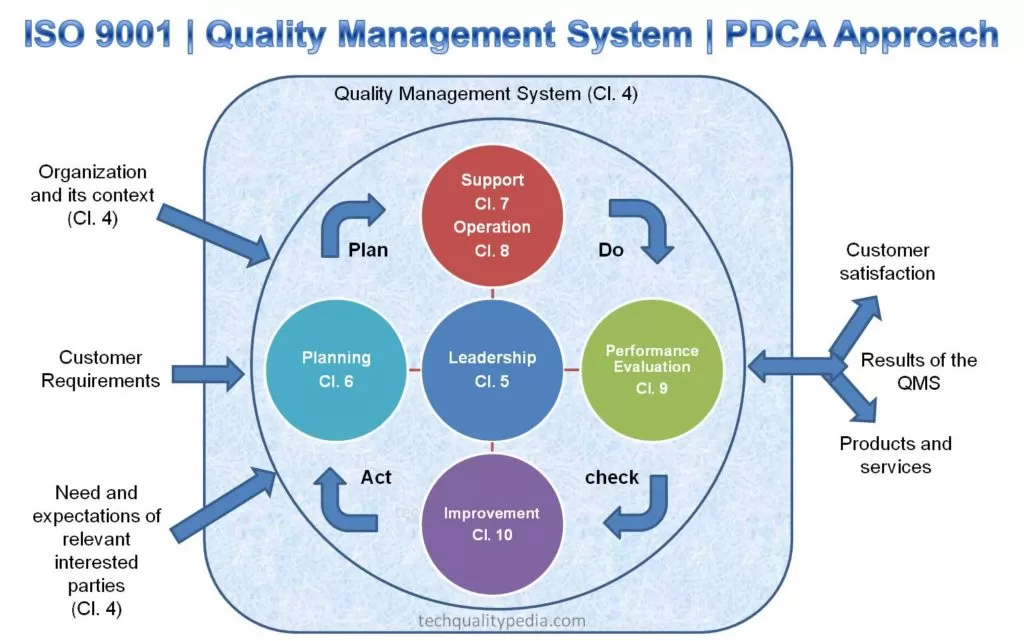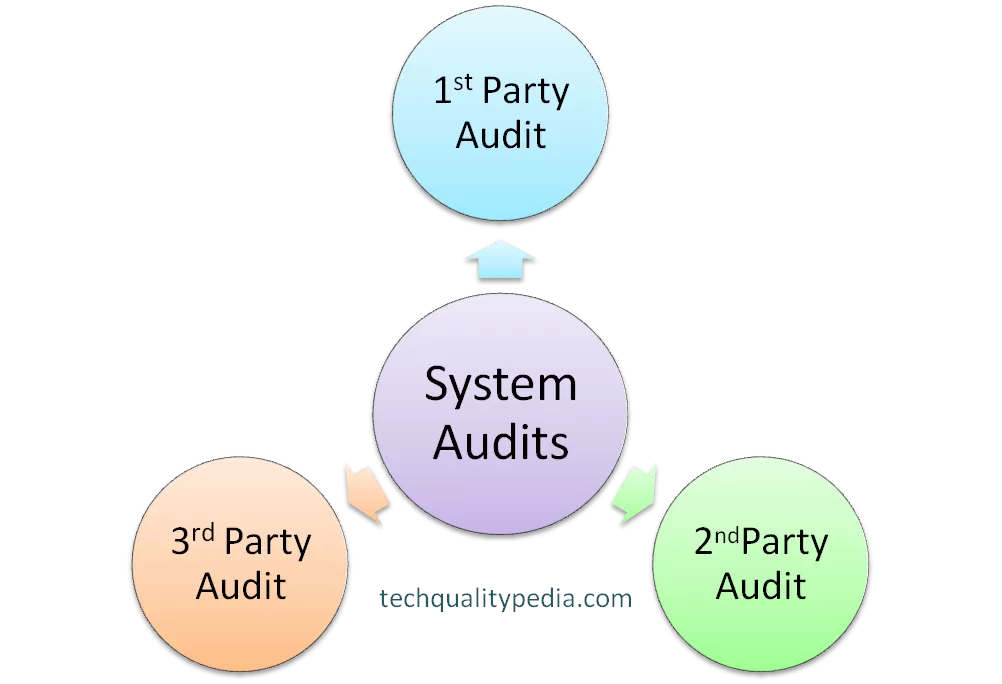Environmental Management System (EMS) is part of the management system used to manage environmental aspects, fulfill compliance obligations, and address risks and opportunities.
The revised ISO 14001:2015 standard is based on the high-level structure (HLS) which is a common framework for all ISO management systems.
Table of Contents
ISO 14001 standard | ISO 14001:2015
ISO 14001 EMS (Environmental Management System) standard aiming at enhancing the environmental performance by reducing & controlling the environmental Aspects & Impacts.
ISO 14001 : 2015 standard integrates with other management systems standards like ISO 9001 (Quality Management System) and ISO 45001(Occupational Health & Safety).
Aim of Environmental Management System standard
Environmental Management System (EMS) standard’s aim/purpose is to:
- Improve the environmental performance by reducing & controlling the environmental Aspects & Impacts.
- Protecting the environment by preventing or reducing negative environmental impacts.
- Assisting the organization in meeting compliance requirements.
In simple words, EMS standard’s aim is to protect the environment by reducing the;
- Air Pollution
- Water Pollution
- Land Pollution
- Depletion of resources
Environmental Management System – PDCA Model
Deming’s Plan-Do-Check-Act (PDCA) is a four-stage iterative strategy/approach towards continual improvement. It involves systematically evaluating/testing potential solutions, assessing the observations/findings, and implementing the ones that have been proven to work.

PLAN: Understand the organization’s context, define environmental objectives and processes required to provide results in accordance with the organization’s environmental policy, assess risk and opportunities, and decide the support needed to accomplish the desired outcomes.
DO: Implement the processes, which include operational planning and control, as well as emergency preparedness and response, as planned.
CHECK: Monitor, assessing, and evaluate environmental performance through internal audit and management review meeting.
ACT: Take necessary measures on identified non conformity for continual improvement.
Important terms & definitions used in ISO 14001 EMS standard
Environment: Surroundings in which company/organization operates, including air, water, land, natural resources, flora, fauna, humans and their interrelationships.
Environmental Aspect: Elements of an organization’s activities, product or services that can interact with the environment.
Environmental Impact: Any change to the environment, whether adverse or beneficial, wholly or partially, resulting from an organization’s environmental aspects.
Management System: An organization’s set of interrelated or interacting elements for establishing policies, objectives, and processes to achieve those objectives.
Compliance Obligations: Legal requirements that an organization must meet/comply with, and other requirements that an organization must meet or chooses to meet/comply with.
(Note: Needs & expectations (i.e. requirements) of interested parties becomes compliance obligations)
Interested Parties: Person or organization which will affect, be suffering from or affected by, or perceive itself to be influenced/affected by a decision or activity.
All stakeholders like Customers, Neighbours, Employees, Vendors/Suppliers, Regulators, non-governmental organizations, Investors, certifications bodies etc. are examples of interested parties.
ISO 14001 Clauses
The latest ISO 14001:2015 standard for environmental management system have 10 Clauses – clause 1 to 3 provides a background to the standard, and clause 4 to 10 common to all management system standards like ISO 9001(Quality Management System) and ISO 45001(Occupational Health & Safety) – earlier known as OHSAS 18001.

- Clause 1:Scope
- Clause 2:Normative References
- Clause 3:Terms and Definitions
- Clause 4:Context of the organization
- Clause 5:Leadership
- Clause 6:Planning
- Clause 7:Support
- Clause 8:Operation
- Clause 9:Performance evaluation
- Clause 10:Improvement
Environmental Management system implementation steps
Steps in the implementation of an Environmental Management system program are:
- Initial Environmental Review (IER) – Identify the environmental aspects including significant aspects of an organization’s activities/operations or products or services.
- Input the corresponding environmental policy commitment which concerns the identified environmental aspects.
- Depute the lead person responsible/accountable for the effective implementation and maintenance of the environmental management program.
- Set objectives and targets.
- Establish specific performance indicators to measure achievement of objectives and targets.
- Write down the legal and other requirements addressed.
- Identify current management practices, root-causes associated to significant aspects.
- Generate activities (OCPs & EMPs) to achieve objectives and targets.
- Review and approve the EMP.
You’ll also like
- Quality Management System Procedures
- ISO Clauses 9001 | ISO 14001 | ISO 45001– Clause Comparison
- Clauses of ISO 14001 | Environmental Management System ISO 14001
- ISO 45001 Clauses | Occupational Health & Safety (OH&S)
- IATF 16949 Clauses | IATF 16949 Requirements
- How to obtain ISO 9001 Certification?
- ISO 9001 Certification Fees | ISO 9001 Certification Body
- What is the ISO 9001? ISO 9001 2015 | Requirements | Principles
- Management Review | Management System Review
- Quality Management System | QMS | Principles | Elements



